The components of an operational plan for business must be in place for business success. If you’re leading a business—or helping others lead theirs—you’re no stranger to strategy sessions that generate excitement… but fizzle when it’s time to execute. That’s where the components of an operational plan come in. They’re the difference between lofty goals and real results. In this article, we’ll walk through the key pieces every operational plan needs, the steps to build one, and the most common blind spots to watch for.
Operational Planning Definition
Operational planning is the process of turning strategy into movement. It’s about taking big-picture goals and grounding them in daily, weekly, and monthly actions that your team can actually execute. Think of it as the GPS system for your strategic roadmap—answering the questions: Who’s doing what? By when? With what resources? And how will we know we’re making progress?
A strong operational plan brings clarity, alignment, and accountability to the table. It creates shared understanding across departments and keeps teams focused on what matters most—without constantly needing to guess or re-negotiate direction.
Strategic vs Tactical vs Operational Planning
Before we dive into the components of an operational plan, let’s clear up some confusion around planning terms.
What is a Strategic Plan?
This is the high-level plan that sets your long-term vision—usually over a 3- to 5-year horizon. It focuses on where you’re going and why. It’s your “north star.”
What is an Operational Plan?
The operational plan is your playbook for how to get there—this year, this quarter, this month. It answers: What actions will we take? Who’s responsible? What resources are needed? How will success be measured?
What is a Tactical Plan?
Tactical plans break the operational plan into shorter bursts of execution, often at the team or project level. Think of them as the drills that build the muscle to play the game.
Together, these three levels form a complete planning ecosystem—from vision to execution.
Why Operational Planning Matters
You can have the best strategy in the world—but without a solid operational plan, it’s just wishful thinking.
Here’s why the components of an operational plan are essential:
- They bring focus to what must be done now—not someday.
- They clarify roles and expectations, reducing confusion and overlap.
- They create benchmarks to measure progress and course-correct early.
- They drive alignment across departments, avoiding siloed efforts.
Bottom line: Strategy without execution is noise. Operational plans bring the music.
5 Steps to Making an Operational Plan That Works
Let’s move from concept to action. Here’s a proven process to build a meaningful, flexible operational plan.
1. Start with the Strategic Plan
Don’t skip this step. Operational plans are execution plans, not idea generators. Begin by grounding yourself in your strategic objectives. What are the top 3–5 outcomes the business is aiming for over the next 12–36 months?
2. Narrow Down Your Scope
Great operational plans have focused scopes. Avoid planning for the entire organization in one go. Instead, zoom in on a department, business unit, or strategic priority.
3. Identify Key Stakeholders
Bring the right voices to the table—especially the people closest to the work. These are your on-the-ground experts who can flag risks, estimate workloads, and spot gaps early.
4. Create the Plan
This is where the components of an operational plan come together:
- Define the objectives for the planning period
- Assign owners to each objective and task
- Estimate timelines and budget
- Identify dependencies and risks
- Outline KPIs to track progress
5. Share and Update Your Operational Plan
Don’t let your plan die in a folder. Share it, track it, and revisit it regularly. Use a shared system or dashboard to keep it alive and visible. This turns the plan from static document to living tool.
9 Critical Components of an Operation Plan
The most effective operational plans are detailed, visual, and easy to follow. Here are the foundational components of an operational plan:
- Executive summary: A quick overview of goals and priorities
- Mission and vision alignment: Connection to strategic direction
- Defined goals and KPIs: Clear outcomes that are measurable
- Timeline: Milestones and deadlines
- Budget and resources: What’s needed to execute
- Staffing plan: Roles and hiring needs
- Tactics and action steps: Day-to-day execution plan
- Key risks and assumptions: What might get in the way—and how to respond
- Performance metrics: How success will be tracked
5 Considerations for a Solid Operational Plan
Beyond the basics, these often-overlooked factors can make or break your plan.
1. Stay Ahead of the Curve
Don’t wait until you’re in crisis mode. Build your plan during stable times, so you’re not playing catch-up when things shift.
2. Marketing and Insights
Your plan should be informed by real market data—customer behavior, trends, and competitor activity. Don’t plan in a vacuum.
3. Logistics and Supply Chain
If your operations involve physical goods or services, map out logistics in detail: sourcing, lead times, shipping, and contingencies.
4. Human Resources (HR)
Your people are your execution engine. Make sure you’re staffed appropriately, and that roles, expectations, and training are crystal clear.
5. Financial Limitations
Be honest about what you can afford. Factor in cash flow, amortization, and recruitment costs. A solid plan is financially grounded—not just ambitious.
Who Owns the Operational Plan?
Operational plans typically live in the hands of middle managers and department leads. These are the folks closest to the work—responsible for translating strategy into action. That said, cross-functional collaboration is key. Finance, HR, marketing, and operations all need to have a seat at the table.
Ownership doesn’t mean isolation. Successful plans are shared, reviewed, and adapted with input from across the business.
Keeping Your Plan Alive
Here’s the truth: even the best operational plan will fall flat if it becomes a “set it and forget it” document. Keep it alive by:
- Reviewing it monthly or quarterly
- Tracking KPIs regularly
- Adjusting based on what’s working and what’s not
- Celebrating progress, not just completion
Use project management tools to visualize progress, flag risks, and maintain alignment. Consider bringing in a coach or outside advisor to pressure-test your plan if things start to drift.
FAQ: Components of an Operational Plan
What are the key components of an operational plan?
The key components of an operational plan include an executive summary, mission and vision alignment, defined goals and KPIs, a timeline, budget and resources, staffing plan, tactics and action steps, key risks and assumptions, and performance metrics. These elements work together to ensure daily execution supports long-term strategy.
Why are operational plans important?
Operational plans are important because they translate strategic goals into executable actions. They provide clarity, accountability, and structure, enabling teams to stay focused, aligned, and productive. Without an operational plan, strategy remains theoretical.
Who is responsible for creating an operational plan?
Middle managers, team leads, or department heads are typically responsible for creating operational plans. However, collaboration with other departments—especially finance, HR, and executive leadership—is critical to ensure alignment, feasibility, and resource availability.
How often should an operational plan be updated?
Operational plans should be updated at least quarterly, or more frequently in fast-moving organizations. Regular updates allow teams to adapt to shifting priorities, market changes, or internal resourcing needs.
How does an operational plan differ from a strategic plan?
A strategic plan outlines long-term goals and the overall direction of the organization (usually over 3–5 years), while an operational plan focuses on short-term execution—what will be done today, this quarter, or this year to achieve those goals.
What are examples of operational planning in a business?
Examples include planning a product launch, coordinating a hiring drive, mapping out a sales campaign, preparing for regulatory compliance, or building out a supply chain expansion. Each uses the operational plan to define tasks, timelines, and ownership.
Can small businesses benefit from an operational plan?
Absolutely. In fact, small businesses often benefit the most. A clear operational plan keeps everyone aligned, eliminates guesswork, and helps leaders prioritize limited resources effectively.
Components of an Operational Plan: Conclusion
The components of an operational plan aren’t just boxes to check—they’re the backbone of high-performance execution. In a world that loves ideas but struggles with follow-through, the businesses that win are the ones that can operationalize their ambition.
If your strategy is the dream, your operational plan is the discipline. Build it well, review it often, and lead it with clarity.
Ready to Build a High-Impact Operational Plan?
If you’re serious about turning strategy into execution, don’t go it alone. Our executive coaches specialize in helping leaders like you create clear, actionable, and high-performance operational plans that drive real results. Whether you’re scaling up, optimizing your team, or just trying to get everyone aligned—we’ve got you.
👉 Connect with an executive coach today and let’s build your roadmap to results.










